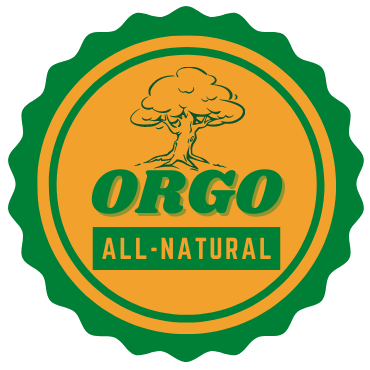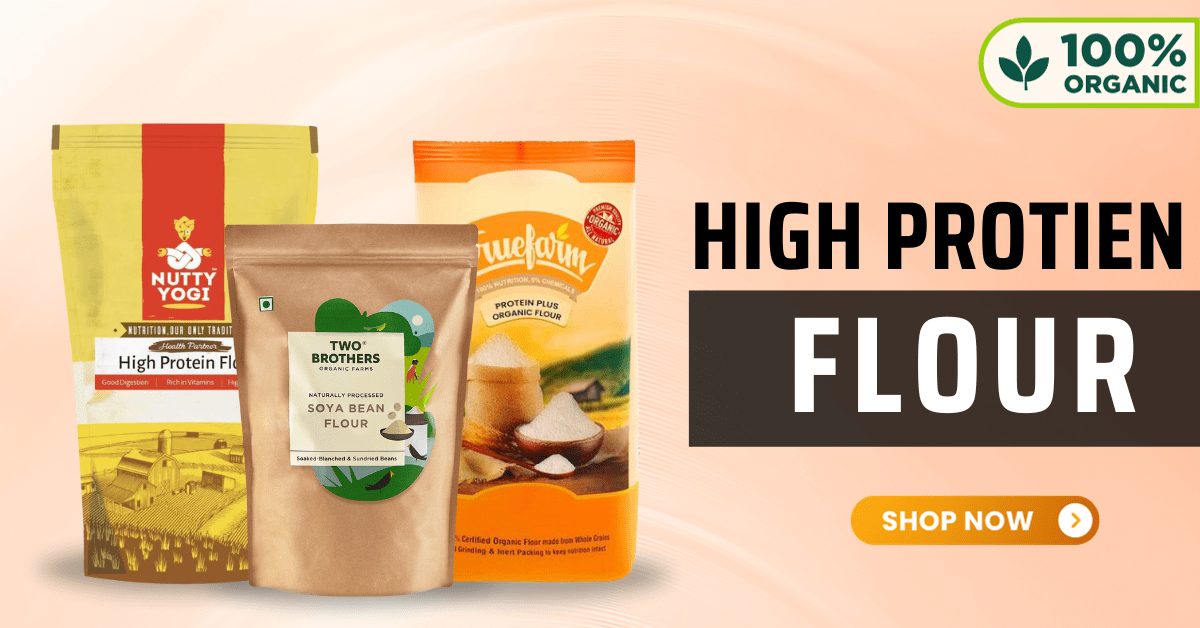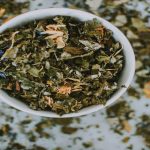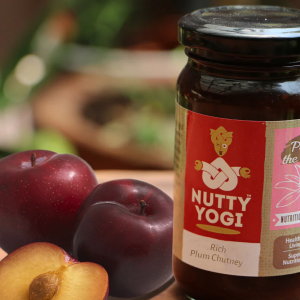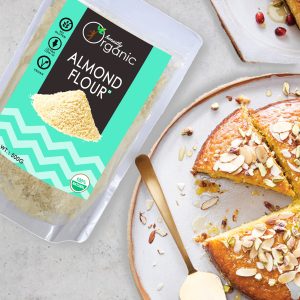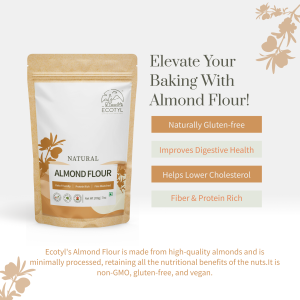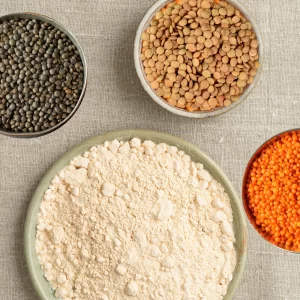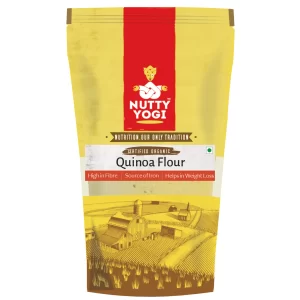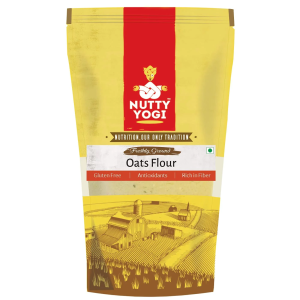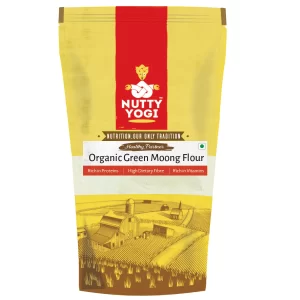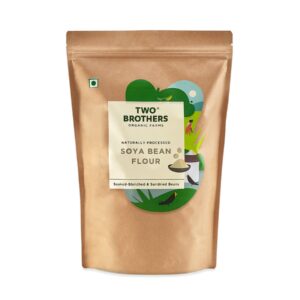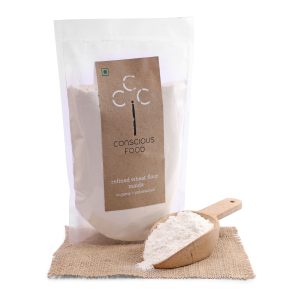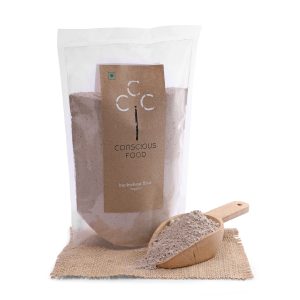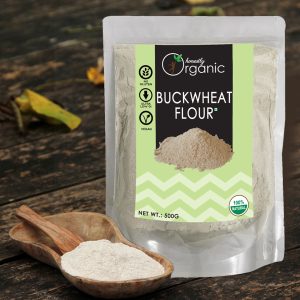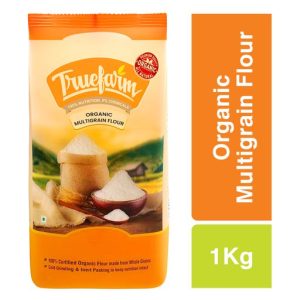Are you looking to elevate your baking and cooking game while prioritizing your health and nutrition? Look no further than the world of high-protein flour! In this blog, we’ll explore the 10 best high-protein flours that can transform your culinary creations.
When it comes to types of flour, high protein flour, often referred to as protein atta, takes center stage. Have you ever wondered how much protein is in 1 wheat roti or the benefits of using high protein atta in your recipes? We’ll unravel the secrets behind these questions and more. From mixed atta ingredients to multigrain atta options, we’ll delve into the versatility and advantages of using high-protein flour. Whether you’re counting fat calories or curious about the nutrition in 100 grams of wheat flour, we’ve got you covered.
Join us on this flavorful journey as we explore the world of high-protein flour and discover how it can be the foundation of your healthy and protein-rich culinary endeavors.
10 Best High Protein Flour with Their Uses and Benefits
Chickpea Flour (Besan)
Chickpea flour, also known as gram flour, is a gluten-free flour made from ground chickpeas. It has a nutty flavor and is commonly used in various cuisines to make dishes like flatbreads, chapatis, and savory pancakes. Chickpea flour is a good source of protein and is popular in vegetarian and vegan cooking.
Uses:
Ideal for dishes like chickpea pancakes (besan chilla) and as a thickening agent in curries.
Benefits:
Packed with plant-based protein and gluten-free, it’s a great source of fiber and essential minerals.
Almond Flour
Almond flour is one of the best high-protein flours and is made from finely ground almonds, offering a nutty flavor and moisture to baked goods. It’s a popular choice for all-purpose flour or maida.
Uses:
Perfect for gluten-free baking, especially for cookies, muffins, and pancakes.
Benefits:
High in protein and healthy fats, almond flour adds a nutty flavor and moist texture to baked goods.
Lentil Flour (Dal Flour)
Lentil flour is a nutritious, high-protein flour made by grinding dried lentils into a fine powder. It serves as an excellent source of plant-based protein and can be used in cooking and baking to boost the nutritional content of various dishes.
Uses:
Commonly used in Indian cuisine for making lentil-based snacks and flatbreads.
Benefits:
Rich in protein, fiber, and iron, it’s a nutritious choice for vegetarian and vegan diets.
Quinoa Flour
Quinoa flour is a high-protein flour derived from ground quinoa seeds. It’s a nutritious gluten-free alternative to traditional flours, offering a substantial protein content. Quinoa flour can be used in a variety of recipes, adding both protein and a unique nutty flavor to your dishes.
Uses:
Versatile for both sweet and savory recipes, including pancakes, bread, and cookies.
Benefits:
High protein content, complete amino acids, and gluten-free nature make it a nutritional powerhouse.
Oat Flour
Oat flour is a high-protein atta made from ground oats. It’s a nutritious and gluten-free option that’s commonly used in baking to boost protein content while providing a pleasant oat flavor to recipes.
Uses:
Adds a mild, nutty flavor to baked goods, especially in muffins, waffles, and pancakes.
Benefits:
Provides a good amount of protein, fiber, and heart-healthy beta-glucans.
Soy Flour
Soy flour is a flour with high protein content derived from soybeans. It’s a versatile ingredient rich in protein, making it a popular choice for adding nutritional value to various recipes, especially in gluten-free and vegan cooking.
Uses:
Enhances the protein content in bread, pancakes, and baked goods.
Benefits:
Contains high-quality protein, vitamins, and minerals while being low in carbs.
Also Read:- Best Atta Brands in India
All-purpose flour or Maida
All-purpose flour, commonly known as maida, is a refined wheat flour that is widely used in cooking and baking due to its versatility and fine texture.
While maida is a useful kitchen staple, it’s important to consume it in moderation due to its refined nature and lower nutritional content compared to whole wheat flour.
Benefits:
Maida’s fine texture and neutral flavor make it suitable for a wide range of recipes, from cakes and pastries to pasta and bread.
Uses:
Maida is a key ingredient in many baked goods like cakes, cookies, and pastries, where its fine texture helps achieve a tender and light texture.
Also Read:- Organic Ragi Nutrients and Benefits
Coconut Flour
Coconut flour is a kind of healthy atta that is derived from dried coconut meat. It’s a gluten-free alternative to traditional wheat flour and is known for its rich coconut flavor. This nutritious high-protein flour is commonly used in gluten-free and paleo baking recipes.
Uses:
Great for gluten-free baking and thickening sauces. Works well in muffins and pancakes.
Benefits:
High in protein, fiber, and healthy fats, it imparts a subtle coconut flavor.
-
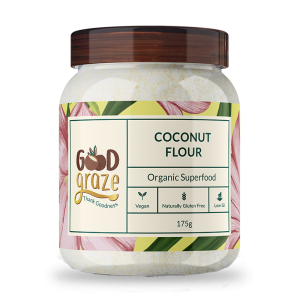 Good Graze Coconut Flour 175gm₹14020% OFF Shop Now
Good Graze Coconut Flour 175gm₹14020% OFF Shop Now -
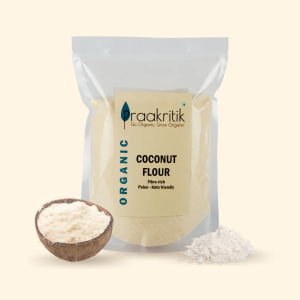 Praakritik Organic Coconut Flour₹30014% OFF Shop Now
Praakritik Organic Coconut Flour₹30014% OFF Shop Now
Also Read:- Best Coconut Oil Brands
Buckwheat Flour
Buckwheat flour is also a high-protein flour made from ground buckwheat groats. It’s a gluten-free option known for its nutty flavor and versatility in baking. This nutritious flour is sought after for its protein content and is often used in gluten-free recipes, making it a popular choice for those with dietary restrictions.
Uses:
Creates hearty pancakes, noodles (soba), and rustic bread.
Benefits:
Rich in protein, fiber, and antioxidants, it’s a good source of essential nutrients.
Multigrain Atta
Multigrain atta, also known as high-protein flour, is a versatile kitchen staple that combines different grains like wheat, barley, oats, and more. It’s valued for its nutritional richness and can be used in various recipes.
Uses:
Incorporate it into your daily cooking for healthier chapatis, parathas, and other dishes.
Benefits:
Multigrain atta is a powerhouse of nutrients, including protein, fiber, vitamins, and minerals, which contribute to a healthier diet.
Incorporating these high-protein flours into your cooking and baking not only enhances the nutritional value of your dishes but also caters to various dietary preferences, including gluten-free and vegan options. Experiment with these flours to discover new flavors and health benefits in your culinary creations.
Conclusion
In conclusion, the world of high protein flours offers a multitude of options to elevate your cooking and baking endeavors. From chickpea flour to almond flour, lentil flour to quinoa flour, and many more, each variety brings its unique flavors and benefits to the table.
So, go ahead and experiment with these versatile flours in your kitchen. Whip up delicious chickpea pancakes, gluten-free almond flour cookies, or hearty buckwheat pancakes. The possibilities are endless, and your taste buds and health will thank you.
Incorporating high protein flours into your culinary repertoire not only adds depth and flavor but also helps you make mindful choices about the food you consume. So, explore, create, and enjoy the benefits of these nutritious flours in your cooking journey.
